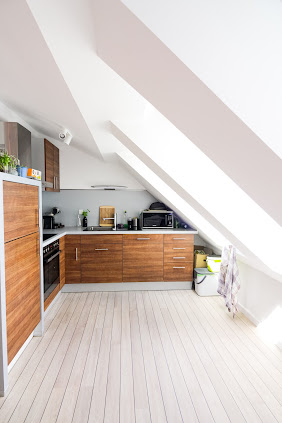Attic Storage Transformation: From Unused Space to Valuable Asset
In the quest to maximize space in our homes, the attic often remains an untapped resource. Transforming an attic into a storage area is a practical solution that not only provides additional space but also enhances the overall value of the property. This article delves into the steps involved in converting an attic into a functional storage space, offering insights into how homeowners can effectively utilize this often-overlooked area.
Understanding the Potential of Attic Space
The attic, typically used for storing seasonal items or old memorabilia, has much more potential than commonly realized. By transforming it into a well-organized storage area, homeowners can free up space in other parts of the home, leading to a more organized and spacious living environment.
Steps for Attic Storage Conversion
1. Assessing Suitability: The first step is to evaluate the attic's suitability for storage. This includes checking the structural integrity of the floor, the headroom available, and the accessibility of the space.
2. Enhancing Accessibility: Installing a sturdy and easy-to-use ladder or staircase is crucial for safe and convenient access to the attic. This might require minor structural modifications, depending on the existing setup.
3. Insulation and Ventilation: Proper insulation is key to protecting stored items from extreme temperatures and moisture. Ventilation is equally important to prevent the buildup of condensation, which can lead to mold and mildew.
4. Choosing Storage Solutions: Selecting the right type of storage units, shelves, or containers that fit the unique angles and dimensions of the attic is essential. Custom-built solutions can maximize the use of space while ensuring easy access to stored items.
Maximizing Storage Efficiency
Efficiently organizing the attic can significantly enhance its storage capacity. Ideas include:
1. Custom Shelving: Building shelves that conform to the sloping sides of the attic can provide ample storage space without consuming the central area.
2. Utilizing Eaves: The eaves can be transformed into useful storage for smaller items or seasonal decorations.
3. Organizational Tools: Using labeled bins, clear containers, and wardrobe boxes can help keep items organized and easily accessible.
4. Flooring Considerations: Installing sturdy flooring is necessary to support the weight of stored items and provide a stable surface to walk on.
Turning Challenges into Opportunities
Every attic presents unique challenges, such as limited space or awkward angles. However, these can be turned into opportunities with creative design and smart planning. For example, low ceilings can be ideal for storing flat items, while the deeper parts of the attic can be used for larger objects.
Transforming an attic into a storage space is a smart way to enhance the functionality of your home. With the right planning, design, and organization, the attic can become a valuable asset that offers practical storage solutions. By following these steps and considering the unique features of your attic, you can create an efficient and effective storage area that adds significant value to your home.
For more practical tips and innovative ideas on attic storage and conversion, visit our website at https://atticplus.com.au/.




Mga Komento
Mag-post ng isang Komento